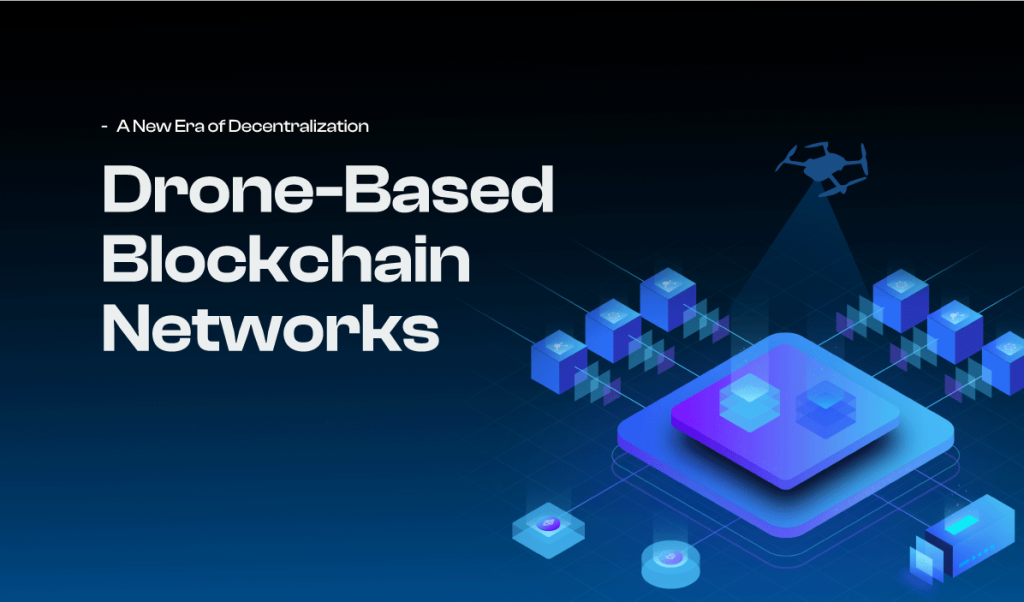In the evolving world of technology, drones, and blockchain are two innovations that have gained significant attention. On their own, they have revolutionized various industries—from logistics to data security. However, when combined, these two technologies hold the potential to transform how we approach network infrastructures. Enter drone-based blockchain networks, a cutting-edge concept poised to reshape decentralized systems.
What is a Drone-Based Blockchain Network?
At its core, a drone-based blockchain network involves using drones as nodes in a decentralized network. Instead of relying solely on terrestrial infrastructure such as physical servers and data centers, drones can act as mobile network nodes, facilitating transactions, data exchange, and consensus mechanisms within a blockchain system.
This combination creates a dynamic, decentralized network that can adapt to various environments, providing secure, distributed ledger services with enhanced mobility and flexibility.
Key Features of Drone-Based Blockchain Networks
1. Decentralization on the Move
Traditional blockchain systems rely on stationary hardware that is connected to the internet. By integrating drones into this infrastructure, the blockchain no longer requires a fixed location. The drones can operate in rural, urban, or even remote areas, expanding the potential use cases for blockchain technology.
2. Increased Security
One of the most significant advantages of using drones in a blockchain network is the heightened security it offers. In a traditional centralized system, a single point of failure—such as a compromised server—can jeopardize the entire network. However, with drones, the network is distributed across multiple mobile nodes, making it difficult for attackers to target a single entry point. Additionally, drones are less prone to physical tampering due to their mobility.
As more drones are added to the network, the system’s capacity and reach can scale exponentially. This makes drone-based blockchain networks highly adaptable to larger areas or complex terrains where traditional infrastructure may be limited or costly to implement.
3. Real-time Data Processing
Drone-based blockchain networks can facilitate real-time data capture and processing, particularly in industries like logistics, agriculture, and disaster response. For example, drones can survey large areas, record real-time data, and securely log the information onto a blockchain, where it is immutable and easily accessible to authorized users.
Potential Applications
Drone-based blockchain networks can play a crucial role in tracking shipments and ensuring the authenticity of goods. Drones can monitor cargo in transit and log data to the blockchain at every step of the supply chain, providing transparency and accountability.
In areas affected by natural disasters or humanitarian crises, traditional communication networks are often disrupted. Drones can act as mobile nodes to provide a decentralized communication and coordination network. Rescue teams and disaster response agencies could use this system to ensure uninterrupted communication, as well as real-time data logging for accountability and coordination.
As smart cities evolve, they require seamless integration between various devices, sensors, and networks. Drone-based blockchain networks can be used to create a decentralized Internet of Things (IoT) system. These drones can monitor urban environments, collect data on traffic, air quality, or energy consumption, and securely transmit that data via blockchain.
Challenges to Overcome
While the potential is enormous, several challenges must be addressed before drone-based blockchain networks can be widely adopted:
- Energy Consumption: Drones require significant energy to stay airborne, which can limit their operational time. Efficient energy management and the development of better batteries or alternative power sources will be crucial.
- Regulatory Hurdles: The integration of drones into airspaces is highly regulated in many countries, and the adoption of drone-based blockchain networks may face bureaucratic delays. Regulatory frameworks need to evolve to accommodate the dual use of drones for blockchain purposes.
- Bandwidth and Connectivity: Maintaining constant, high-speed communication between drones and blockchain networks, especially in remote areas, could be challenging. However, ongoing advancements in 5G and satellite communications offer hope for overcoming these limitations.
Conclusion
Drone-based blockchain networks represent a convergence of two of the most transformative technologies of the 21st century. By creating mobile, decentralized networks that are secure, scalable, and flexible, these systems have the potential to revolutionize industries from logistics to disaster recovery.

